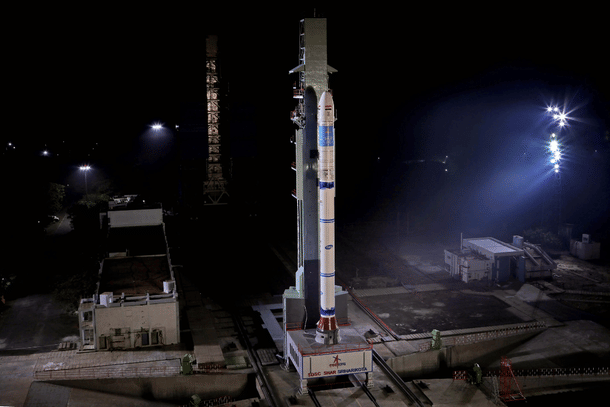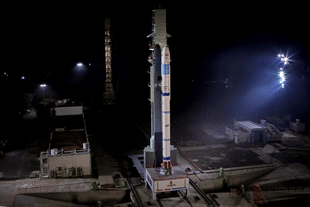Science
ISRO Mission Accomplished: India's Small Satellite Launch Vehicle Lifts Off, Places Three Satellites In Orbit
Karan Kamble
Feb 10, 2023, 09:47 AM | Updated 09:57 AM IST
Save & read from anywhere!
Bookmark stories for easy access on any device or the Swarajya app.


India's small satellite launch vehicle (SSLV), carrying three satellites, has launched for just the second time ever.
The SSLV-D2/EOS-07 mission has been accomplished successfully.
India's new rocket took off at 9.18 am from the first launch pad at Satish Dhawan Space Centre-Sriharikota Range (SDSC-SHAR), off the coast of Andhra Pradesh.
The three stages and the velocity trimming module as the terminal stage were completed as planned, after which the three satellites were separated from the rocket and placed into their intended orbits.
The primary satellite, EOS-07, was an Earth-observation micro satellite. The co-passenger satellites were Janus-1 and AzaadiSAT-2.
Janus-1 is a 10.2-kg satellite built in a record time of just 10 months with payload providers from seven countries. It’s a technology demonstrator, smart satellite mission based on the Antaris software platform.
Antaris is the world’s first software platform that dramatically simplifies the design, simulation, and operation of satellites. The company Antaris Inc is based in Los Altos, California.
The 8.7-kg AzaadiSAT-2 is a combined effort of about 750 girl students across India guided by Chennai-based Space Kidz India.
The mission aims to demonstrate LoRa and amateur radio communication capabilities and measure radiation levels in space, among other things.
The SSLV is capable of launching mini, micro, and nano satellites — 10 kg to 500 kg mass — into a 500-km planar orbit on an on-demand basis.
It’s a three-stage vehicle. Whereas solid fuel fires the three stages, satellite insertion into the intended orbit is achieved through a liquid propulsion-based velocity trimming module as the terminal stage.
The SSLV will be used to deploy small satellites — from 10 kg to 500 kg — into low-Earth orbit, for which there is a high and ever-increasing demand among developing countries, private corporations, and educational institutions.
Larger launch vehicles, like the polar satellite launch vehicle (PSLV), were not able to provide the kind of cost-effective and flexible launch solutions required by smaller players.
The SSLV will offer low turnaround time, flexibility in accommodating multiple satellites, launch-on-demand feasibility, and minimal launch infrastructure requirements.
The SSLV is slated to become the next ISRO workhorse, playing a key role in the commercial small satellite launch services.
Also Read: Going Again: ISRO’s New Rocket, Small Satellite Launch Vehicle, Set For Second Launch After Amends
Karan Kamble writes on science and technology. He occasionally wears the hat of a video anchor for Swarajya's online video programmes.





